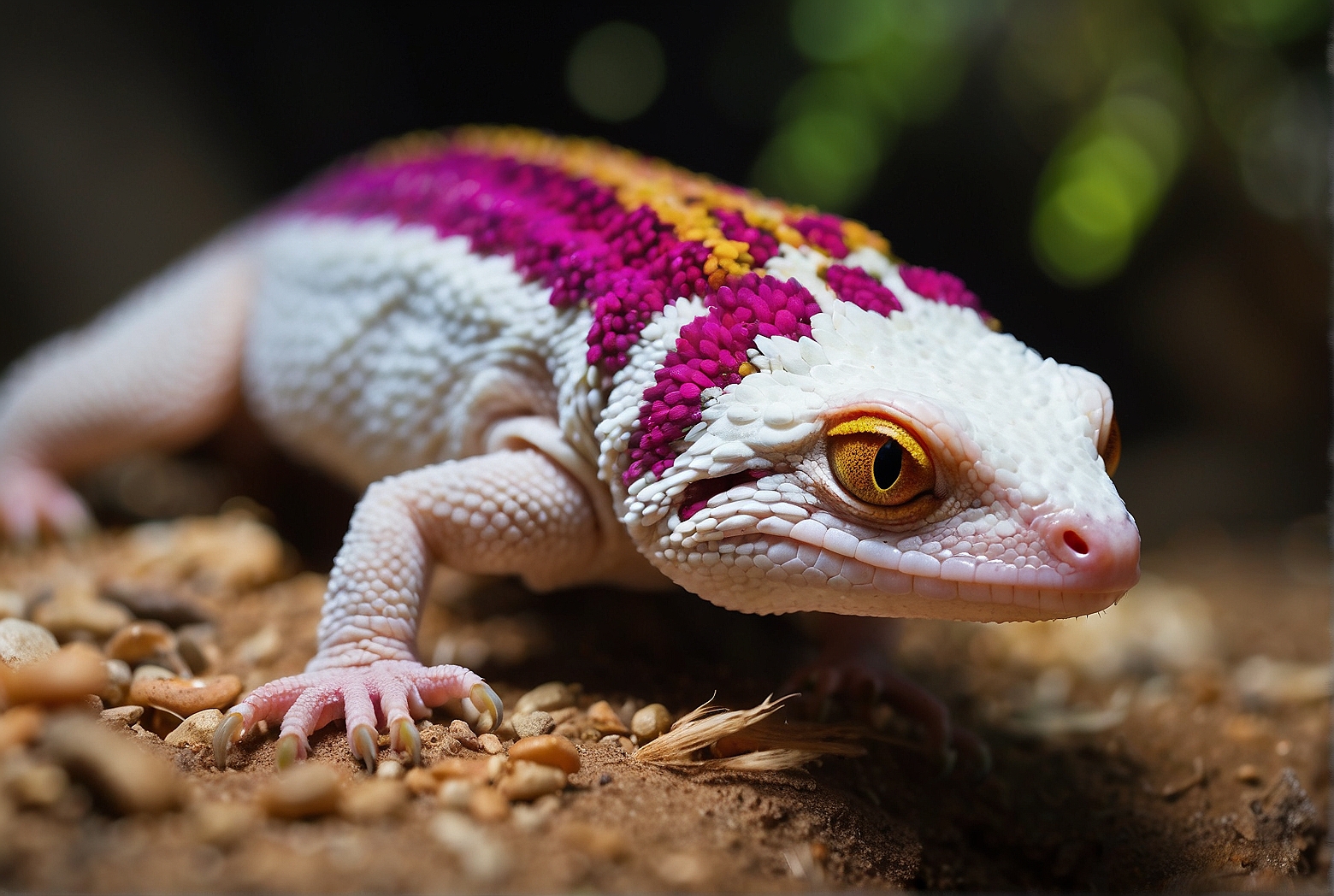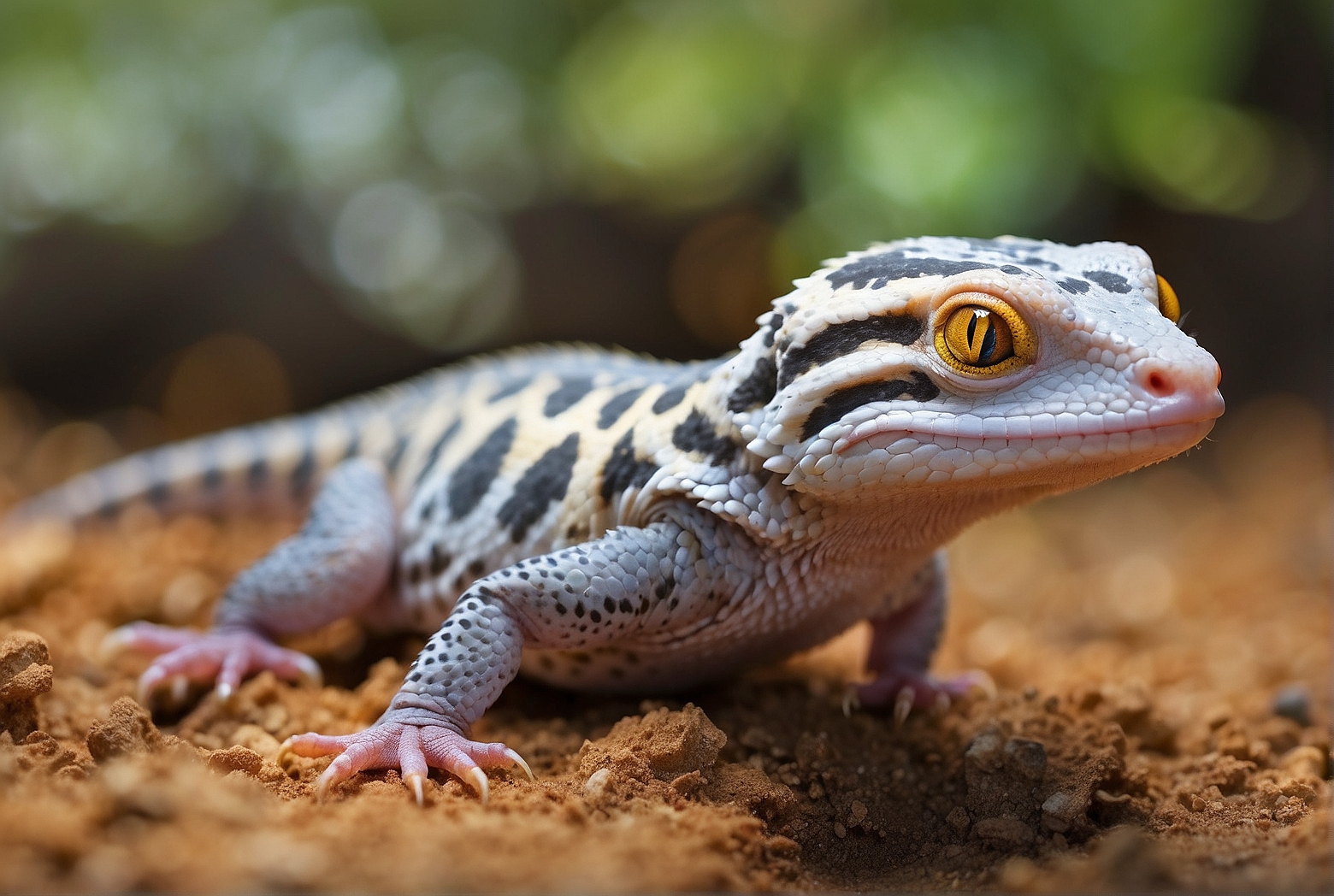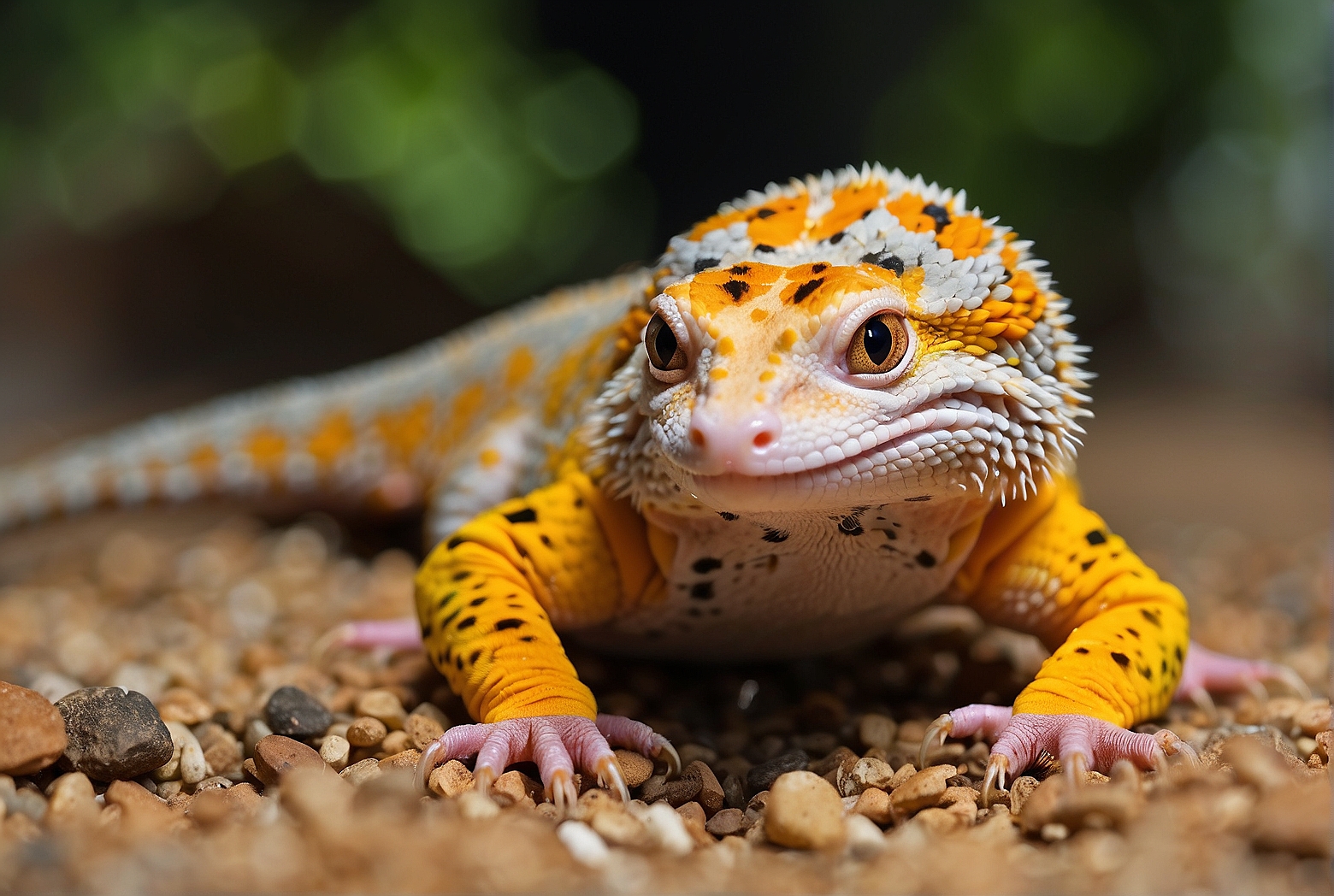Have you ever wondered how long leopard gecko food lasts? If you’re a leopard gecko owner or thinking about getting one, it’s essential to know how long their food can stay fresh and nutritious. Leopard geckos have specific dietary requirements, and their food needs to be stored and handled correctly to ensure their health and happiness. In this article, we’ll explore the longevity of leopard gecko food and provide you with the information you need to keep your gecko well-fed and thriving. Prepare to become a pro at managing your leopard gecko’s mealtime!
What is leopard gecko food?
Leopard gecko food refers to the types of food that are appropriate for feeding leopard geckos, a popular pet reptile species. These small, nocturnal lizards require a varied diet to meet their nutritional needs and ensure their overall health and well-being.
Types of food for leopard geckos
Leopard geckos are insectivores, which means their diet mainly consists of insects. Some common types of food for leopard geckos include crickets, mealworms, waxworms, and dubia roaches. These insects provide essential nutrients, such as protein and fats, that leopard geckos need to thrive.
Additionally, leopard geckos can also benefit from occasional supplementation with calcium and vitamin D3, which can be provided in the form of powdered supplements. These supplements help prevent metabolic bone disease and ensure proper growth and development.
Nutritional requirements of leopard geckos
Leopard geckos have specific nutritional requirements that need to be met in order to maintain their health. In the wild, they consume a variety of insects, which helps them acquire the necessary nutrients from different sources.
A balanced diet for leopard geckos should contain a variety of insects to ensure they receive a wide range of nutrients. These insects should be gut-loaded, meaning they are fed a nutritious diet before being fed to the gecko, to enhance their nutritional value. Calcium and vitamin D3 supplements should also be provided to ensure proper bone health.

Furthermore, leopard geckos have different nutritional needs at different stages of their life. Juveniles, for example, require more protein to support their growth, while adult geckos benefit from a higher proportion of fats in their diet.
Factors that affect the shelf life of leopard gecko food
Various factors can affect the shelf life of leopard gecko food, and it is important to consider these factors to ensure the food is fresh and safe for consumption.
Storage conditions
The way leopard gecko food is stored plays a crucial role in its shelf life. It is essential to store dry food, such as crickets or mealworms, in a cool and dry place to prevent mold or bacterial growth. Canned food, on the other hand, should be stored in a cool, dry area and refrigerated after opening to maintain its freshness.
Expiration dates
Checking the expiration dates of commercially prepared leopard gecko food is another important consideration. It is crucial to purchase food that has a long shelf life and ensure that it is consumed before the expiration date to avoid any potential issues.
Quality of the food
The quality of the leopard gecko food itself can also affect its shelf life. Lower quality or improperly processed food may have a shorter shelf life and can spoil more rapidly. It is advisable to purchase high-quality leopard gecko food from reputable suppliers to ensure its freshness and nutritional value.
Proper handling
Proper handling of leopard gecko food is crucial to maintaining its shelf life. Food should be handled with clean hands or utensils to prevent contamination. Additionally, it is important to avoid exposing the food to excessive heat or sunlight, as this can accelerate spoilage.

How long does commercially prepared leopard gecko food last?
The shelf life of commercially prepared leopard gecko food can vary depending on the type of food and how it is stored.
Dry leopard gecko food
Dry leopard gecko food, such as dried insects or powdered supplements, typically has a longer shelf life compared to canned or fresh food. When stored properly in a cool and dry place, dry food can last for several months or even up to a year. However, it is important to monitor the food for any signs of spoilage, such as mold or changes in texture or color, before feeding it to your leopard gecko.
Canned leopard gecko food
Canned leopard gecko food, like canned insects or reptile-specific diets, usually has a shorter shelf life once opened. After opening, it is recommended to refrigerate the canned food and use it within a few days to maintain its freshness. It is crucial to check the manufacturer’s guidelines or the expiration date to ensure the food is still safe for consumption.
How to store leopard gecko food properly
Proper storage of leopard gecko food is essential to maintain its freshness and prevent spoilage.
Dry food storage
Dry food, such as insects or powdered supplements, should be stored in a cool, dry place. Airtight containers or resealable bags can be used to prevent moisture or pests from contaminating the food. It is important to avoid exposing the dry food to excessive heat or sunlight, as this can degrade its nutritional value and shorten its shelf life.
Canned food storage
Canned leopard gecko food should be stored in a cool, dry area, away from direct sunlight. After opening, any remaining food should be transferred to a sealed container and refrigerated to maintain its freshness and prevent bacterial growth. It is advisable to use the canned food within a few days to ensure its quality and avoid potential spoilage.
Signs of spoiled leopard gecko food
It is crucial to be able to recognize the signs of spoiled leopard gecko food to prevent feeding your gecko with potentially harmful or unpalatable food.
Changes in color and texture
Spoiled leopard gecko food may exhibit noticeable changes in color or texture. Insects may become discolored, moldy, or appear slimy. Powdered supplements may clump or appear lumpy. Any significant changes in the appearance of the food should be a warning sign that it is no longer safe for consumption.
Unpleasant odor
Spoiled food often develops an unpleasant odor. If you notice a foul or distinct smell coming from the leopard gecko food, it is best to discard it immediately. Leopard geckos have a keen sense of smell and may refuse to eat food with a strong, off-putting odor.
Mold or bacteria growth
The presence of mold or bacterial growth is a clear indication that the leopard gecko food has spoiled. Mold can be recognized by its fuzzy or powdery appearance, while bacterial growth may manifest as slimy or discolored patches on the food. Feeding your leopard gecko spoiled food can lead to digestive issues or even illness.
Importance of feeding fresh food to leopard geckos
Feeding fresh food to leopard geckos is crucial for their optimal nutrition and overall health.
Optimal nutrition
Fresh food, especially live insects, provides leopard geckos with the necessary nutrients they need to thrive. Live insects are rich in protein and other essential nutrients, which contribute to the growth, development, and overall well-being of the gecko. Additionally, feeding a varied diet of fresh food ensures that the gecko receives a balance of nutrients from different sources.
Preventing health issues
Feeding spoiled or expired food to leopard geckos can lead to various health issues, including digestive problems and infections. Fresh food helps minimize the risk of bacterial or fungal contamination, which can be harmful to the gecko’s digestive system. By providing fresh and nutritious food, you can help prevent potential health issues and promote the longevity of your leopard gecko.
How to determine if a leopard gecko is eating enough
Monitoring your leopard gecko’s eating habits is important to ensure it is consuming enough food to meet its nutritional needs.
Observing feeding behavior
One way to determine if a leopard gecko is eating enough is by observing its feeding behavior. A healthy leopard gecko should show interest in its food and actively hunt or eat when provided with its meal. If you notice a significant decrease in appetite or a lack of interest in food, it may be an indication that the gecko is not eating enough.
Monitoring weight gain
Regularly monitoring your leopard gecko’s weight can also help determine if it is eating enough. A well-nourished gecko should maintain a healthy weight or show gradual weight gain over time. Sudden weight loss or failure to gain weight may indicate an inadequate diet or health issues that require further attention.
Feeding schedule for leopard geckos
Establishing a proper feeding schedule for leopard geckos is essential for maintaining their health and providing them with the necessary nutrients.
Frequency of feeding
Leopard geckos are typically fed every 2-3 days, with juveniles requiring more frequent feedings. Juveniles may be fed daily or every other day to support their rapid growth, while adult geckos can be fed every 2-3 days to maintain their weight and health. It is important to adjust the feeding frequency based on the gecko’s age, size, and activity level.
Portion sizes
The portion size of food for leopard geckos should be appropriate for their size and age. The insects provided should be smaller than the width of the gecko’s head to ensure they can be easily swallowed. Overfeeding can lead to obesity and other health issues, so it is important to provide an adequate amount of food without overindulging the gecko.
Alternatives to commercially prepared leopard gecko food
While commercially prepared leopard gecko food is convenient and provides essential nutrients, there are alternative options to consider.
Live insects
Live insects, such as crickets, mealworms, or dubia roaches, are a natural and nutritious food source for leopard geckos. They can be purchased from pet stores or bred at home. Opting for live insects allows for more variety in the gecko’s diet and provides them with the opportunity to engage in natural hunting behaviors.
Homemade gecko diets
Some leopard gecko owners choose to prepare homemade gecko diets to ensure the quality and variety of the food. These diets often consist of a mixture of fruits, vegetables, and protein sources, such as eggs or chicken. However, it is important to consult with a veterinarian or reptile nutritionist to ensure the homemade diet meets the gecko’s nutritional requirements and is properly balanced.
Conclusion
Proper feeding practices are essential for promoting the health and well-being of leopard geckos. Providing the appropriate types of food, maintaining proper storage conditions, and monitoring the freshness of leopard gecko food are key factors in ensuring that your gecko receives the necessary nutrients and stays healthy. By following the guidelines outlined in this article, you can support the optimal nutrition and overall longevity of your leopard gecko companion.
